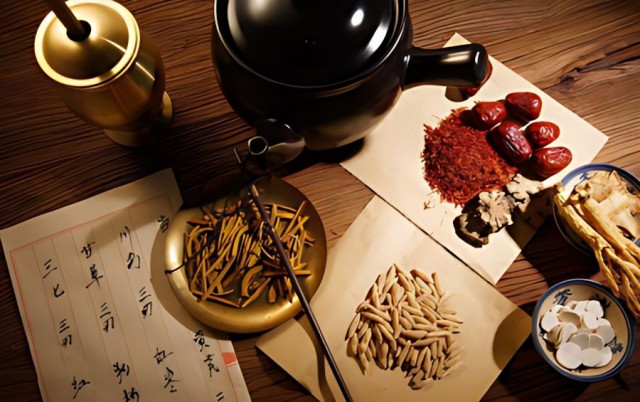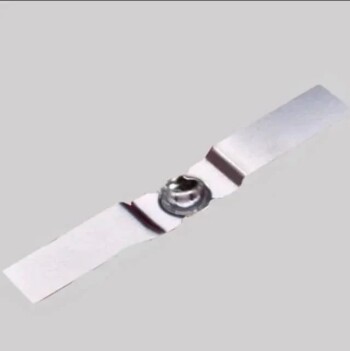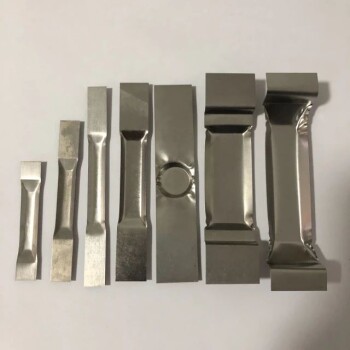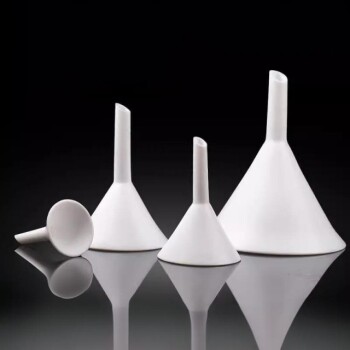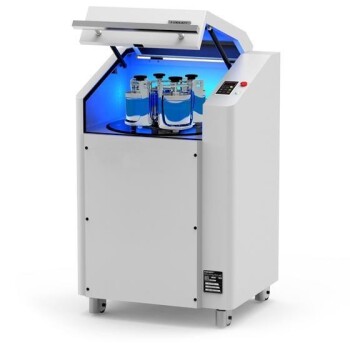Introduzione agli evaporatori rotanti
Definizione e funzione
Gli evaporatori rotanti svolgono un ruolo cruciale nella concentrazione degli estratti di medicina cinese, facilitando l'evaporazione e la rimozione di parte del solvente di estrazione. Questo processo aumenta significativamente la concentrazione di soluti all'interno dell'estratto, migliorandone la potenza e l'efficacia. Il funzionamento di un evaporatore rotante prevede il riscaldamento delle soluzioni fino al loro punto di ebollizione in condizioni di vuoto, il che consente un'efficiente vaporizzazione del solvente. I vapori del solvente vengono quindi condensati e raccolti, mentre l'estratto concentrato rimanente viene conservato per un'ulteriore lavorazione o utilizzo.
Questo metodo di concentrazione è particolarmente vantaggioso per gli estratti della medicina cinese, grazie alla sua capacità di gestire composti delicati che potrebbero degradarsi a temperature più elevate. L'ambiente controllato fornito dall'evaporatore rotante garantisce che i principi attivi degli estratti rimangano stabili e intatti durante il processo di concentrazione. Inoltre, il movimento rotatorio dell'evaporatore crea un sottile film di soluzione sulla superficie del pallone di evaporazione, che aumenta la velocità di evaporazione e migliora l'efficienza complessiva.
La funzione degli evaporatori rotanti non si limita alla semplice concentrazione, ma svolge anche un ruolo fondamentale nel perfezionamento e nella standardizzazione dei preparati di medicina cinese. Ottenendo costantemente concentrazioni più elevate di soluti, questi dispositivi contribuiscono all'uniformità e al controllo della qualità dei medicinali finali. Ciò è essenziale per garantire che ogni lotto di medicina cinese soddisfi gli standard prescritti e fornisca effetti terapeutici costanti.
In sintesi, gli evaporatori rotanti sono strumenti indispensabili nel campo della medicina tradizionale cinese, in quanto offrono un mezzo affidabile ed efficiente per concentrare gli estratti preservando l'integrità dei loro componenti attivi. La loro capacità di operare in condizioni controllate e i loro efficienti meccanismi di trasferimento del calore li rendono particolarmente adatti ai requisiti unici della raffinazione della medicina cinese.
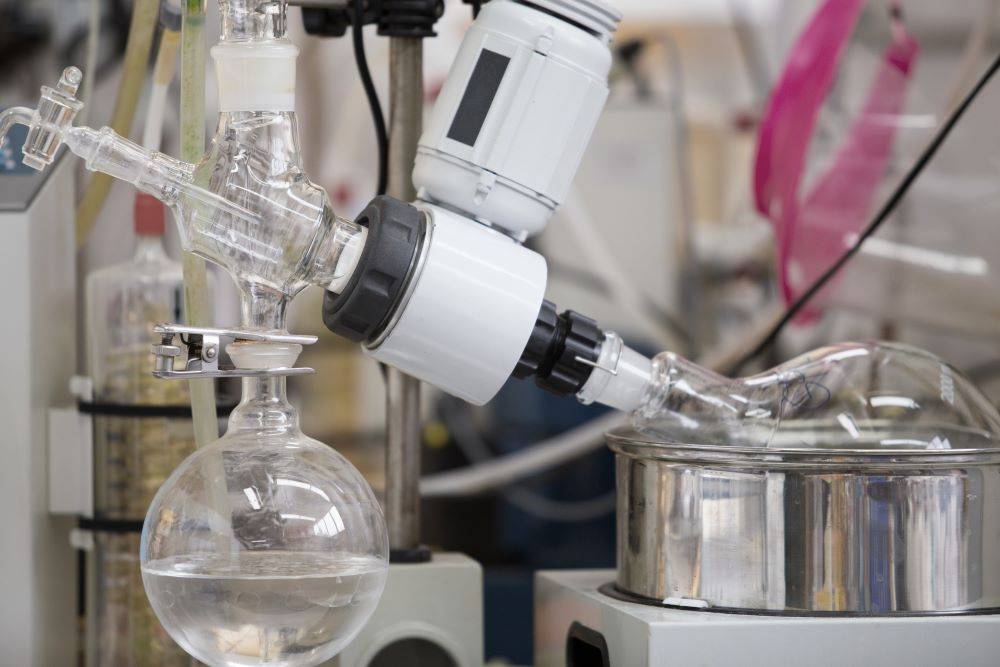
Caratteristiche dell'evaporazione
I processi di evaporazione presentano diverse caratteristiche distintive che sono fondamentali per comprendere la loro applicazione nella concentrazione degli estratti della medicina tradizionale cinese. Una delle caratteristiche principali è l'innalzamento del punto di ebollizione delle soluzioni dovuto alla presenza di soluti non volatili. Questo fenomeno, noto come innalzamento del punto di ebollizione, si verifica perché i soluti interferiscono con la capacità del solvente di vaporizzare, richiedendo quindi temperature più elevate per ottenere la stessa velocità di evaporazione.
Un altro aspetto significativo è l'impatto specifico dei materiali e dei processi. Solventi e soluti diversi interagiscono in modo unico con l'apparecchiatura di evaporazione, determinando variazioni nell'efficienza e nel consumo energetico. Ad esempio, il tipo di solvente (ad esempio, acqua, alcol) e la natura del soluto (ad esempio, ionico, non ionico) possono influenzare in modo significativo i coefficienti di trasferimento del calore e i requisiti energetici complessivi del processo di evaporazione.
Il consumo di energia è un fattore critico nei processi di evaporazione. L'energia richiesta per riscaldare la soluzione e mantenere le condizioni di vuoto necessarie può essere notevole. La richiesta di energia è influenzata da fattori quali la concentrazione iniziale della soluzione, la concentrazione finale desiderata e l'efficienza dei meccanismi di trasferimento del calore. Pertanto, l'ottimizzazione dell'uso dell'energia è essenziale per un funzionamento economico e sostenibile degli evaporatori rotanti.
In sintesi, le caratteristiche uniche dell'evaporazione, tra cui l'innalzamento del punto di ebollizione, l'impatto specifico sui materiali e il consumo energetico significativo, giocano un ruolo fondamentale nella raffinazione degli estratti della medicina tradizionale cinese con gli evaporatori rotanti. La comprensione di questi aspetti è fondamentale per un funzionamento efficiente ed efficace dell'apparecchiatura.
Apparecchiature per l'evaporazione
Classificazione degli evaporatori
Gli evaporatori, il cuore delle apparecchiature di evaporazione, sono classificati in base a diversi parametri critici che ne influenzano il funzionamento e l'efficienza. Queste classificazioni si basano principalmente su condizioni di pressione , utilizzo di vapore secondario secondario, e tipi di funzionamento .
Condizioni di pressione
- Evaporatori atmosferici: Funzionano a pressione atmosferica standard, il che li rende adatti ad applicazioni generiche in cui il controllo della pressione non è critico.
- Evaporatori pressurizzati: Funzionano a pressione elevata, consentendo punti di ebollizione più elevati e quindi un trasferimento di calore più efficiente in applicazioni specifiche.
- Evaporatori a decompressione (sotto vuoto): Funzionano a pressione ridotta, abbassando il punto di ebollizione della soluzione, il che li rende ideali per materiali sensibili al calore come gli estratti della medicina tradizionale cinese.
Utilizzo del vapore secondario
- Evaporatori a effetto singolo: Utilizzano il vapore prodotto direttamente dalla soluzione in ebollizione, che viene poi condensato senza ulteriori utilizzi.
- Evaporatori a effetto multiplo: Utilizzano il principio degli evaporatori multipli in serie, dove il vapore di un effetto viene utilizzato per riscaldare quello successivo, migliorando notevolmente l'efficienza energetica.
Tipi operativi
- Evaporatori ciclici: Funzionano a cicli, in cui la soluzione viene periodicamente concentrata e poi rimossa, adatti a processi batch.
- Evaporatori a singolo passaggio: Funzionamento continuo in cui la soluzione passa attraverso l'evaporatore una sola volta, raggiungendo la concentrazione desiderata, ideale per le linee di produzione continue.
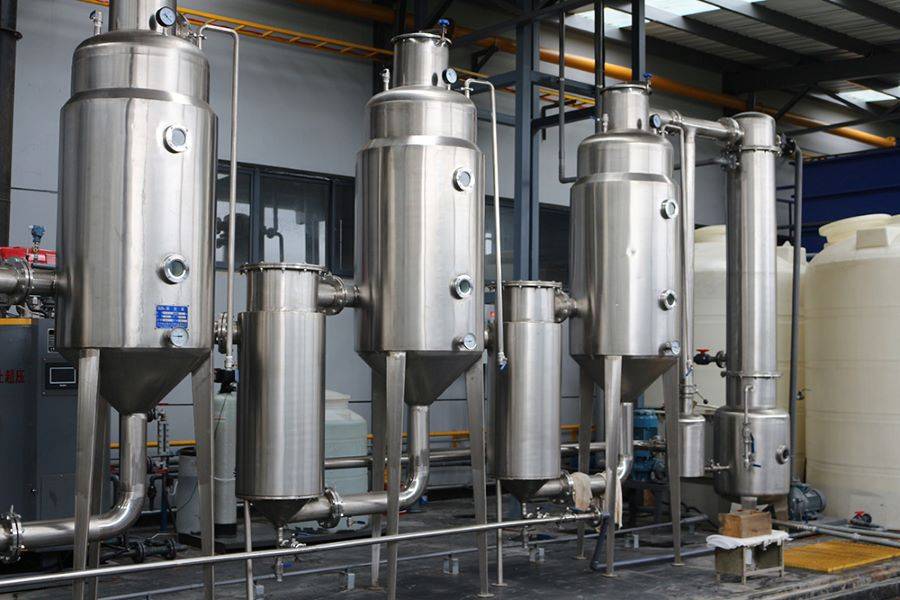
Ciascuna classificazione presenta vantaggi unici e viene selezionata in base ai requisiti specifici del materiale da trattare, alla scala di funzionamento e alle considerazioni di efficienza e sicurezza desiderate.
Criteri di selezione
Nella scelta delle apparecchiature di evaporazione per la raffinazione degli estratti della medicina tradizionale cinese, è necessario considerare diversi fattori critici per garantire prestazioni ed efficienza ottimali. I criteri principali includono l'integrità strutturale dell'apparecchiatura, le dimensioni dell'area di evaporazione, l'efficienza operativa, l'adattabilità a vari tipi di liquidi medicinali e il consumo energetico.
Integrità strutturale
La struttura dell'apparecchiatura di evaporazione deve essere robusta e ben progettata per resistere alle condizioni rigorose del processo di evaporazione. Una struttura robusta garantisce l'affidabilità a lungo termine e riduce la probabilità di guasti meccanici.
Area di evaporazione
Un'area di evaporazione più ampia consente di trattare in modo più efficiente grandi volumi di liquido. Ciò è particolarmente importante nella raffinazione della medicina tradizionale cinese, dove la concentrazione dei soluti è un obiettivo chiave.
Efficienza operativa
Un'elevata efficienza di evaporazione è fondamentale per ridurre al minimo i tempi di lavorazione e il consumo energetico. È altamente auspicabile un'apparecchiatura in grado di ottenere un'evaporazione rapida senza compromettere l'integrità dei composti medicinali.
Adattabilità
L'apparecchiatura deve essere abbastanza versatile da poter gestire un'ampia gamma di liquidi medicinali, ciascuno con le sue proprietà uniche. Questa adattabilità garantisce che la stessa apparecchiatura possa essere utilizzata in diverse fasi del processo di raffinazione, riducendo la necessità di più unità specializzate.
Efficienza energetica
Il consumo di energia è un aspetto importante, soprattutto nelle operazioni su larga scala. Le apparecchiature ad alta efficienza energetica non solo riducono i costi operativi, ma minimizzano anche l'impatto ambientale del processo di raffinazione.
Valutando attentamente questi criteri, si può scegliere l'apparecchiatura di evaporazione più adatta per la concentrazione e la raffinazione degli estratti della medicina tradizionale cinese, garantendo efficacia ed efficienza.
Dettagli dell'evaporatore rotante
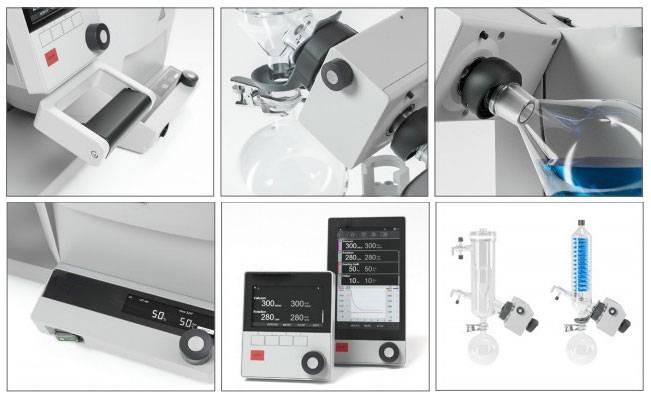
Componenti strutturali
L'evaporatore rotante è un'apparecchiatura sofisticata progettata per un'efficiente rimozione del solvente e per la concentrazione delle soluzioni. I suoi componenti principali comprendono:
- Unità ospite: Il corpo principale dell'evaporatore rotante, responsabile dell'alloggiamento del motore e dei sistemi di controllo che guidano la rotazione e mantengono il vuoto.
- Vetreria: Essenziale per mantenere la purezza e l'integrità chimica del processo, le parti in vetro come il pallone di evaporazione e il condensatore sono parte integrante del sistema.
- Bagno a temperatura costante: Questo componente assicura un riscaldamento uniforme, consentendo un'evaporazione controllata ed efficiente grazie al mantenimento di una temperatura costante durante tutto il processo.
- Connettori e valvole: Diversi connettori e valvole sono fondamentali per la funzionalità del sistema, in quanto consentono un controllo preciso del flusso di liquidi e gas e garantiscono l'integrità del vuoto.
Ognuno di questi componenti svolge un ruolo fondamentale nel funzionamento efficiente dell'evaporatore rotante, contribuendo alla sua efficacia nella concentrazione e nella raffinazione degli estratti della medicina tradizionale cinese.
Principi di funzionamento
In condizioni di vuoto, l'evaporatore rotante funziona riscaldando il bagno e facendo ruotare il pallone di evaporazione. La rotazione crea un film sottile e uniforme sulle pareti interne del pallone, aumentando in modo significativo la superficie disponibile per l'evaporazione. L'ambiente sotto vuoto abbassa il punto di ebollizione del solvente, consentendo un'evaporazione efficiente a temperature più basse.
Il solvente, una volta vaporizzato, passa attraverso il condensatore dove viene raffreddato e riportato allo stato liquido. Il solvente condensato viene quindi raccolto e può essere riciclato per un ulteriore utilizzo. L'intero processo è progettato per massimizzare il tasso di evaporazione, riducendo al minimo il consumo energetico e la perdita di solvente.
Per illustrare ulteriormente l'efficienza di questo processo, si considerino i seguenti punti:
- Aumento della superficie: La rotazione del pallone assicura che un'ampia superficie sia continuamente esposta al bagno di riscaldamento, accelerando il tasso di evaporazione.
- Riduzione del punto di ebollizione: Il vuoto riduce la pressione all'interno del sistema, abbassando il punto di ebollizione del solvente e consentendo l'evaporazione a temperature notevolmente inferiori al punto di ebollizione atmosferico.
- Efficienza energetica: Operando a temperature più basse e sotto vuoto, l'evaporatore rotante riduce al minimo il consumo energetico rispetto ai metodi di evaporazione tradizionali.
Questa combinazione di fattori rende l'evaporatore rotante uno strumento ideale per la concentrazione e la raffinazione degli estratti della medicina tradizionale cinese, garantendo un'elevata efficienza e uno spreco minimo di solvente.
Requisiti di funzionamento
Per garantire un funzionamento efficiente e sicuro di un evaporatore rotante, è necessario seguire meticolosamente diverse fasi dettagliate. Il processo inizia con un'accurata ispezione pre-utilizzo . Questo comporta il controllo dell'integrità di tutti i componenti in vetro, la verifica del corretto funzionamento del sistema di vuoto e la conferma che il bagno di riscaldamento sia riempito con il liquido appropriato. Qualsiasi segno di usura o danno deve essere affrontato immediatamente per evitare guasti operativi.
Successivamente, il caricamento e il riscaldamento del pallone di evaporazione è fondamentale. Il matraccio, contenente la soluzione da concentrare, viene montato saldamente sull'evaporatore rotante. Il sistema viene quindi attivato e il matraccio ruota a velocità controllata per creare una sottile pellicola sulle pareti interne. Questa pellicola aumenta la superficie di evaporazione, aumentando così l'efficienza del processo. Contemporaneamente, il bagno di riscaldamento viene regolato alla temperatura richiesta, assicurando che la soluzione venga riscaldata in modo uniforme senza causare danni termici.
Regolazione dell'altezza del altezza del bagno è un'altra fase essenziale. L'altezza del bagno di riscaldamento rispetto alla beuta di evaporazione deve essere impostata con precisione per ottimizzare il trasferimento di calore. Se il bagno è troppo alto, può causare un surriscaldamento e potenziali danni alla soluzione. Al contrario, se è troppo basso, l'efficienza del trasferimento di calore sarà compromessa, con conseguente rallentamento dei tassi di evaporazione. Il monitoraggio continuo e la regolazione fine di questo parametro sono necessari per mantenere le condizioni ottimali.
Infine, alimentazione continua della soluzione per mantenere un processo di concentrazione costante. Questa tecnica prevede l'aggiunta di soluzione fresca al pallone di evaporazione man mano che il solvente evapora, assicurando che il processo di concentrazione rimanga ininterrotto. L'alimentazione continua richiede un controllo accurato per evitare di sovraccaricare il sistema e mantenere i livelli di concentrazione desiderati.
Seguendo questi passaggi dettagliati, gli operatori possono garantire che l'evaporatore rotante funzioni in modo efficiente, sicuro ed efficace nella concentrazione e nella raffinazione degli estratti della medicina tradizionale cinese.
Procedure di pulizia
Dopo ogni utilizzo, l'evaporatore rotante deve essere sottoposto a un processo di pulizia meticoloso per mantenerne l'efficienza e la durata. Il primo passo consiste nel risciacquare accuratamente l'apparecchiatura con acqua purificata per rimuovere eventuali solventi o estrattori residui. In questo modo si garantisce che non rimangano contaminanti che potrebbero influenzare le operazioni successive o compromettere la purezza delle estrazioni future.
Dopo il risciacquo, tutte le porte e le connessioni dell'evaporatore rotante devono essere accuratamente sigillate con un sacchetto di plastica pulito. Questa misura precauzionale impedisce alla polvere e ad altre particelle di depositarsi sull'apparecchiatura, che potrebbero altrimenti causare contaminazioni o inefficienze operative. Inoltre, è consigliabile apporre un'etichetta di identificazione pulita sul sacchetto di plastica. Questo cartellino può servire a diversi scopi, tra cui annotare la data dell'ultima pulizia, identificare l'apparecchiatura specifica e fornire qualsiasi altra informazione pertinente che potrebbe essere utile per l'utente successivo.
Rispettando queste procedure di pulizia, gli utenti possono assicurarsi che il loro evaporatore rotante rimanga in condizioni ottimali, pronto per il prossimo ciclo di concentrazione e perfezionamento nell'estrazione della medicina tradizionale cinese.
Sicurezza e manutenzione
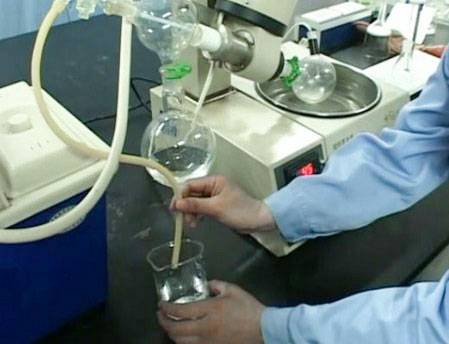
Precauzioni di sicurezza
Quando si utilizza un evaporatore rotante, l'osservanza di protocolli di sicurezza adeguati è fondamentale per garantire l'integrità dell'apparecchiatura e la sicurezza dell'utente. Le principali misure di sicurezza includono il rispetto della sequenza corretta per l'avvio e l'arresto del dispositivo. Questa sequenza è fondamentale per evitare improvvisi sbalzi di pressione e potenziali danni all'apparecchiatura.
Inoltre, è essenziale assicurarsi che il bagno termostatico sia adeguatamente riempito d'acqua prima del funzionamento. Questa fase è fondamentale per mantenere un controllo costante della temperatura, indispensabile per un'evaporazione efficiente dei solventi. Un bagno adeguatamente riempito impedisce il surriscaldamento e garantisce che il processo di evaporazione rimanga stabile ed entro parametri sicuri.
Il mantenimento dell'ermeticità dei connettori è un'altra misura di sicurezza fondamentale. Le perdite nel sistema possono portare a fluttuazioni di pressione, compromettendo le condizioni di vuoto necessarie per un'evaporazione efficace. Controlli e manutenzione regolari dei connettori possono prevenire tali problemi, garantendo un ambiente operativo stabile e sicuro.
In sintesi, il rispetto di queste precauzioni di sicurezza - rispettare il corretto ordine di avvio e arresto, assicurarsi che il bagno termostatico sia pieno d'acqua e mantenere l'ermeticità dei connettori - è fondamentale per il funzionamento sicuro ed efficiente di un evaporatore rotante.
Guasti comuni e soluzioni
Quando si utilizza un evaporatore rotante, possono verificarsi diversi problemi comuni che possono ostacolare l'efficienza e l'efficacia del processo di evaporazione. Questi problemi includono bottiglie non rotanti, bassi livelli di vuoto e problemi di riscaldamento. Per ognuno di questi problemi sono previste fasi diagnostiche e soluzioni specifiche per garantire il funzionamento ottimale dell'evaporatore rotante.
-
Bottiglie non rotanti: Questo problema deriva in genere da malfunzionamenti del motore o da ostruzioni nel meccanismo di rotazione. Per risolvere il problema, occorre innanzitutto ispezionare il motore per verificare che funzioni correttamente. Se il motore è funzionante, verificare la presenza di eventuali detriti o blocchi nel meccanismo di rotazione che potrebbero impedire alla bottiglia di girare. In alcuni casi, potrebbe essere necessario sostituire il motore o eliminare l'ostruzione.
-
Vuoto ridotto: Un basso vuoto può ridurre significativamente l'efficienza del processo di evaporazione. Questo problema è spesso dovuto a perdite nel sistema di vuoto o a problemi con la pompa del vuoto. Per prima cosa, ispezionare tutti i giunti e le connessioni per individuare eventuali segni di perdite. Se si riscontrano perdite, stringere o sostituire le guarnizioni interessate. Se non si rilevano perdite, la pompa del vuoto potrebbe necessitare di manutenzione o sostituzione.
-
Problemi di riscaldamento: Un riscaldamento inefficiente o incoerente può rallentare il processo di evaporazione. Questo problema può essere causato da diversi fattori, tra cui malfunzionamenti del termostato, problemi di livello dell'acqua nel bagno termostatico o elementi riscaldanti danneggiati. Per risolvere il problema, assicurarsi che il bagno termostatico sia riempito al livello corretto e funzioni correttamente. Controllare che gli elementi riscaldanti non siano danneggiati e, se necessario, sostituirli. Anche la manutenzione e la calibrazione regolare del termostato possono prevenire i problemi di riscaldamento.
Affrontando sistematicamente questi guasti comuni, gli utenti possono mantenere le prestazioni e la longevità dei loro evaporatori rotanti, garantendo un funzionamento efficiente e affidabile nella concentrazione e nella raffinazione degli estratti della medicina tradizionale cinese.
Requisiti di evaporazione e concentrazione
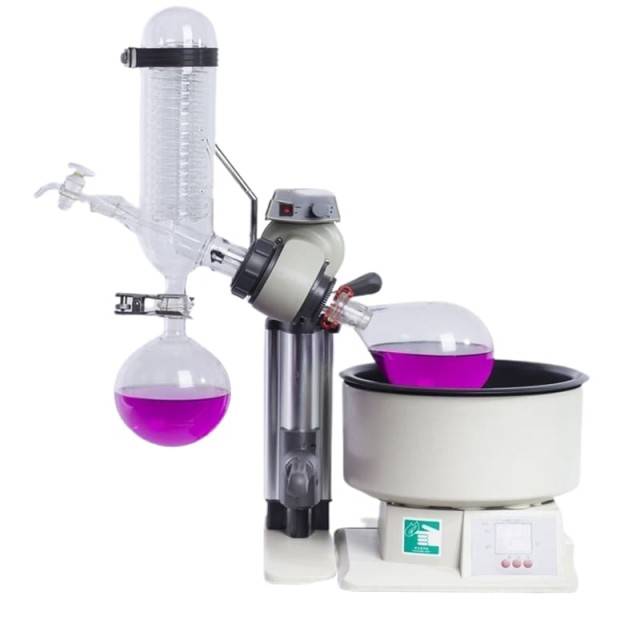
Differenza di temperatura di trasferimento del calore
L'aumento della differenza di temperatura di trasferimento del calore attraverso la decompressione sotto vuoto è una strategia fondamentale per migliorare l'efficienza di evaporazione degli estratti di medicina cinese. Questo metodo sfrutta i principi della termodinamica per creare un ambiente in cui il punto di ebollizione del solvente si abbassa notevolmente, accelerando così il processo di evaporazione. La decompressione sotto vuoto riduce efficacemente la pressione ambientale che circonda la soluzione, consentendo un'evaporazione più rapida ed efficiente a temperature più basse.
Questo approccio non solo consente di risparmiare energia, ma anche di ridurre al minimo la degradazione termica dei delicati composti medicinali spesso presenti negli estratti di erbe cinesi. Mantenendo una temperatura di esercizio più bassa, il rischio di alterazioni chimiche o di perdita di principi attivi è sostanzialmente ridotto. La maggiore efficienza di evaporazione si traduce in tempi di lavorazione più rapidi e in rese più elevate di estratti concentrati, fondamentali per la produzione di formulazioni medicinali efficaci.
Per illustrare l'impatto della decompressione sottovuoto sul trasferimento di calore, si consideri la seguente tabella:
| Condizione | Pressione (kPa) | Punto di ebollizione (°C) | Tasso di evaporazione |
|---|---|---|---|
| Atmosferico | 101.3 | 100 | Moderato |
| Decompressione sotto vuoto | 50 | 38 | Alta |
| Decompressione sotto vuoto | 20 | 20 | Molto alta |
Come dimostra la tabella, la riduzione della pressione abbassa significativamente il punto di ebollizione, aumentando così la velocità di evaporazione del solvente. Questo aumento della velocità di evaporazione è direttamente proporzionale al miglioramento della differenza di temperatura di trasferimento del calore, rendendo la decompressione sotto vuoto una tecnica indispensabile per la raffinazione degli estratti di medicina cinese.
Coefficiente di trasferimento totale del calore
Il miglioramento del coefficiente di trasferimento di calore totale è fondamentale per ottimizzare l'efficienza dei processi di evaporazione e concentrazione nella raffinazione degli estratti di medicina tradizionale cinese. Questo coefficiente, che quantifica la velocità di trasferimento del calore dalla fonte di riscaldamento alla soluzione, è direttamente influenzato dalla resistenza termica del sistema.
La resistenza termica, spesso causata da strati di isolamento, incrostazioni o superfici di scambio termico scadenti, agisce come una barriera al trasferimento di calore efficiente. Affrontando sistematicamente questi problemi - come la pulizia delle superfici di scambio termico, il miglioramento dell'isolamento e l'ottimizzazione della progettazione delle apparecchiature di trasferimento del calore - è possibile ridurre in modo significativo la resistenza termica complessiva. Questa riduzione si traduce in un maggiore coefficiente di trasferimento di calore totale, accelerando così il tasso di evaporazione e migliorando l'efficienza di concentrazione degli estratti.
A titolo esemplificativo, si considerino i seguenti fattori che contribuiscono alla resistenza termica e le relative soluzioni:
| Fattore di resistenza termica | Soluzione |
|---|---|
| Incrostazioni sugli scambiatori di calore | Pulizia e manutenzione regolari per rimuovere i depositi. |
| Scarso isolamento | Migliorare i materiali isolanti per ridurre le perdite di calore. |
| Progettazione non ottimale dell'apparecchiatura | Riprogettazione degli scambiatori di calore per un migliore utilizzo della superficie. |
Implementando queste strategie, l'evaporatore rotante può ottenere un trasferimento di calore più efficiente, con conseguente miglioramento dei processi di evaporazione e concentrazione. Questa ottimizzazione è particolarmente critica nel contesto della raffinazione della medicina tradizionale cinese, dove è fondamentale mantenere l'integrità dei composti attivi.
Conclusione
Vantaggi degli evaporatori rotanti
Gli evaporatori rotanti offrono diversi vantaggi che li rendono particolarmente adatti alla raffinazione e alla concentrazione dei preparati di medicina cinese. Uno dei vantaggi principali è la capacità di operare a basse temperature, che è fondamentale per preservare le delicate composizioni chimiche dei farmaci tradizionali cinesi. Il funzionamento a bassa temperatura si ottiene grazie all'integrazione di un sistema di vuoto, che riduce il punto di ebollizione dei solventi, consentendo un'evaporazione efficiente senza sottoporre i composti medicinali a calore elevato.
Inoltre, gli evaporatori rotanti eccellono nel recupero dei solventi, un aspetto critico nell'industria farmaceutica dove i solventi sono spesso costosi e dannosi per l'ambiente se non gestiti correttamente. Il sistema di alimentazione continua di questi dispositivi assicura che il recupero del solvente sia massimizzato, riducendo così gli sprechi e i costi operativi.
Un altro vantaggio significativo è il trasferimento di calore uniforme fornito dagli evaporatori rotanti. A differenza delle apparecchiature di distillazione tradizionali, che possono portare a un riscaldamento non uniforme e alla potenziale degradazione di composti sensibili, gli evaporatori rotanti distribuiscono il calore in modo uniforme sulla superficie di evaporazione. Ciò è facilitato dalla forza centripeta generata durante la rotazione, che crea un film sottile e uniforme del campione liquido sulla superficie interna della bottiglia di evaporazione. Questa ampia area riscaldata garantisce un'elevata efficienza di evaporazione, rendendo il processo più rapido ed efficace.
In sintesi, la combinazione di funzionamento a bassa temperatura, recupero efficiente del solvente e trasferimento uniforme del calore rende gli evaporatori rotanti uno strumento indispensabile per la raffinazione e la concentrazione dei preparati di medicina cinese.
Prodotti correlati
- Set di barche di evaporazione in ceramica Crogiolo di allumina per uso di laboratorio
- Barca di evaporazione in tungsteno-molibdeno con fondo emisferico
- Agitatore rotante a disco da laboratorio per un'efficiente miscelazione e omogeneizzazione dei campioni
- Pompa per vuoto a membrana oil-free per uso di laboratorio e industriale
- Barca di evaporazione in ceramica alluminata per deposizione di film sottili
Articoli correlati
- Rivestimento per evaporazione a fascio di elettroni: Vantaggi, svantaggi e applicazioni
- Barche di grafite in PECVD per il rivestimento delle celle
- Studio comparativo delle tecniche di evaporazione e sputtering nella deposizione di film sottili
- Tecnologia di rivestimento per evaporazione a fascio di elettroni e selezione dei materiali
- Capire le barche di evaporazione nel rivestimento sottovuoto
